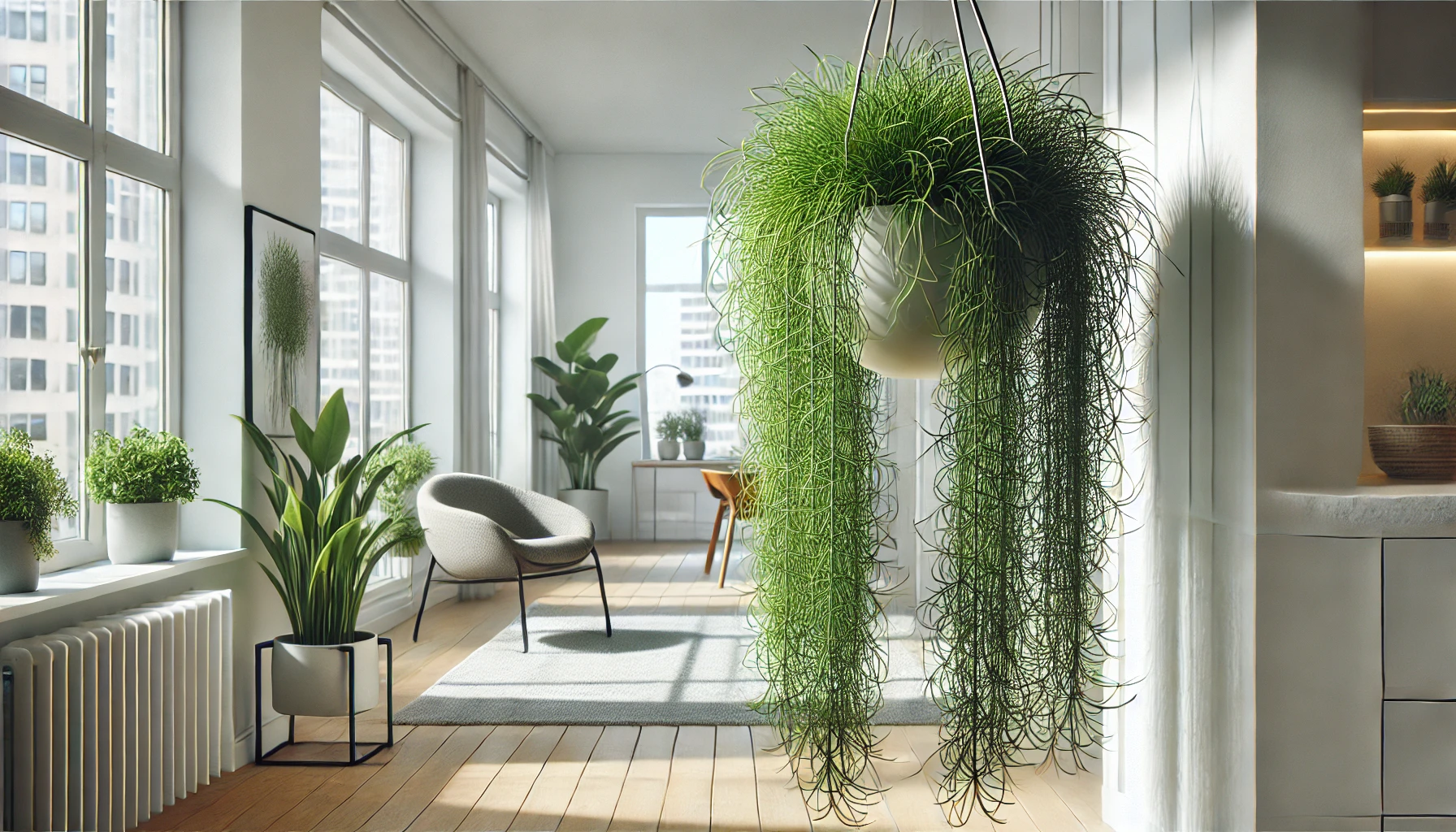
Rhipsalis, also known as the Mistletoe Cactus, is a fascinating and delicate plant that adds a touch of elegance to any indoor garden. Formally known as Rhipsalis baccifera, this epiphytic cactus can grow up to 6 feet long, making it an ideal choice for hanging baskets or cascading over shelves.
History and Ideal Growing Conditions
Rhipsalis is native to the rainforests of Central and South America, as well as parts of Africa and Madagascar. Unlike most cacti, Rhipsalis thrives in humid, tropical environments. This plant naturally grows in the shaded understory of forests, often clinging to trees and other structures. Ideal growing conditions for Rhipsalis include bright, indirect light, high humidity, and a well-draining soil mix that retains some moisture.
Toxicity and Pets
Good news for pet owners: Rhipsalis is non-toxic to both cats and dogs. This means you can safely grow this beautiful cactus without worrying about your furry friends getting harmed if they decide to investigate or nibble on the plant.
Best Practices for Caring for Rhipsalis
Caring for Rhipsalis is relatively simple, making it a great choice for both beginner and experienced plant enthusiasts. Let’s dive into the essential aspects of its care.
Watering and Humidity: Rhipsalis prefers consistently moist soil but not waterlogged. Water the plant thoroughly when the top inch of soil feels dry. High humidity is beneficial, so consider placing your Rhipsalis in a bathroom or kitchen, or use a humidifier to maintain optimal moisture levels.
Soil, Light, and Temperature: Use a well-draining soil mix, such as a combination of cactus soil and peat moss or orchid bark. This mix ensures that the roots are aerated while retaining some moisture. Rhipsalis thrives in bright, indirect light; too much direct sunlight can cause the plant to become sunburned. Maintain a temperature range between 60-80°F (15-27°C) to keep your Rhipsalis healthy.
Common Problems and Remedies
While Rhipsalis is generally low-maintenance, it can still face some challenges. Overwatering can lead to root rot, so ensure proper drainage and avoid letting the plant sit in water. If you notice yellowing or wilting, check the soil moisture and adjust your watering schedule accordingly. Pests such as spider mites and mealybugs may occasionally infest Rhipsalis. Treat these pests with insecticidal soap or neem oil to keep your plant healthy.
Propagation and Benefits
Propagating Rhipsalis is a rewarding process that can be done through stem cuttings. Simply cut a healthy segment of the plant and allow it to callous over for a day or two. Then, plant the cutting in a well-draining soil mix and keep it moist until roots develop. The benefits of growing Rhipsalis include its air-purifying qualities and its ability to add a lush, tropical feel to your indoor space.
Final Thoughts
Rhipsalis is a versatile and graceful addition to any plant collection. Its unique appearance and easy care requirements make it a favorite among houseplant enthusiasts. Whether you’re looking to add a cascading beauty to your hanging baskets or simply want to enjoy the lush greenery, Rhipsalis is sure to bring charm and elegance to your home.



